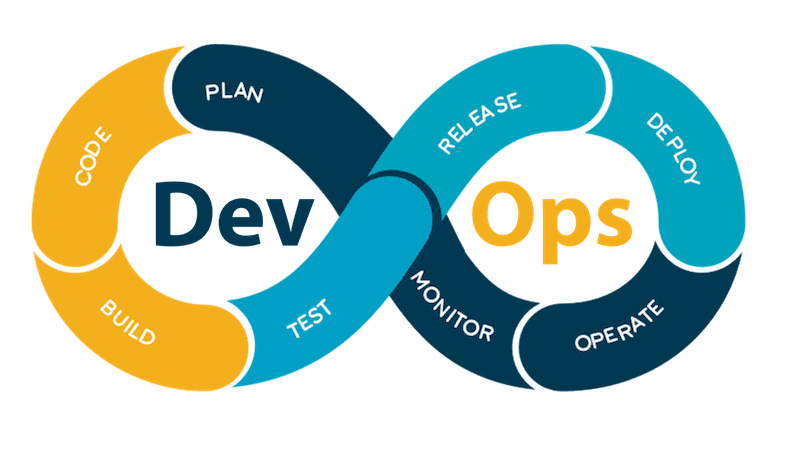DevOps vs. SRE: What’s the Difference?


With the growing complexity of application development, organizations are increasingly adopting methodologies that enable reliable, scalable software. DevOps and SRE (Site Reliability Engineering) are two methods aimed at improving the product release cycle by enhancing collaboration, automation, and monitoring. Both approaches use automation and collaboration to assist teams in developing resilient and dependable software, but there are significant distinctions in what they offer and how they work.
As a result, the purposes of DevOps and SRE are explored in this article. We’ll examine the advantages, disadvantages, and key aspects of both techniques.
What is DevOps?
DevOps is an approach to software development that adheres to lean or agile practices, distinguishing it from other methods. DevOps focuses on enabling continuous delivery, regular releases, and an automated method of developing applications and software. The DevOps approach comprises the norms and technological practices that allow rapid flow through planned activities.
The DevOps process has the following goals:
- Speed up time-to-market for products.
- Reduce software development time.
- Increase responsiveness to market demands.
DevOps combines operations and development teams to deploy software smoothly and efficiently. It is based on fostering close communication and a high degree of automation. According to DevOps principles, the team responsible for programming is also accountable for maintaining the code once it is in production. This means that traditionally separate operations and development teams collaborate to improve software releases.
What are the Advantages of DevOps?
First, DevOps improves software delivery speed by making minor changes and releasing them more frequently. This allows companies to bring products to market faster. Updating and fixing issues are quicker and easier, and the software’s stability is increased. Furthermore, even small modifications can be rolled back quickly if needed. Another benefit is that software delivery becomes safer.
What DevOps Does and How It Works
DevOps is a fantastic way to create an environment of collaboration right from the beginning. The focus is on ensuring that teams work together to get the code into production and then maintain it. This means that the DevOps team is accountable for creating the code, fixing bugs, and handling everything else associated with the code. The DevOps process is built around five core principles:
- Eliminate silos: The DevOps team’s mission is to share information between operations and development. This approach leads to greater insight and encourages better communication.
- Accept failure and fail quickly: The DevOps process identifies methods to minimize risk, ensuring that similar errors are not likely to occur twice. The team uses test automation to detect flaws earlier in the release cycle.
- Introduce changes gradually: The DevOps team frequently makes small, incremental changes rather than deploying massive modifications to production. This makes it easier to assess changes and identify problems.
- Utilize automation and tools: The team builds the release pipeline using automation tools. This speeds up the process, improves accuracy, and reduces the risk of human error, minimizing unnecessary manual effort.
- Monitor everything: DevOps relies on data to evaluate the impact of every action taken. The four most frequently used metrics to measure the effectiveness of the DevOps process are the time it takes to implement changes, deployment frequency, time to restore service, and failure rate.
To function effectively, DevOps relies on powerful tools to manage their workflow. They use version control for all of the code (with tools such as GitHub and GitLab), Continuous Integration software (Jenkins, Spinnaker, etc.), deployment automation tools, test automation tools (Selenium, etc.), and incident management tools (PagerDuty, Opsgenie, etc.)
Read more: Top 30 Most Effective DevOps Tools for 2022
What is Site Reliability Engineering (SRE)?
The concept of Site Reliability Engineering (SRE) was first introduced in 2003. It was initially developed to provide a framework for developers when creating large-scale software. Today, SRE is carried out by experts with solid development backgrounds who employ engineering methods to resolve common problems while running systems in production. It’s like a systems engineer who is also responsible for operations. SRE blends system operation responsibilities with software development, covering various duties—writing and building code, distributing the code, and managing it in production.
The primary goal of SRE is to create a stable and highly scalable system or software program. In the past, operations staff and software engineers were two distinct groups with different types of work, each dealing with problems in their own ways. Site Reliability Engineering goes beyond this conventional approach, and its collaborative nature has been gaining popularity.
SRE employs three Service Level Commitments to measure how well a system performs:
- Service Level Agreements (SLAs): Define the required reliability, performance, and latency as expected by end-users.
- Service Level Objectives (SLOs): Target values and goals set by SRE teams to meet the SLAs.
- Service Level Indicators (SLIs): Measure specific parameters and aspects that indicate how well a system conforms to the standards set by SLOs. Typical SLIs include request latency, system throughput, lead time, deployment frequency, mean time to restore (MTTR), and availability error rate.
What are the Advantages of Site Reliability Engineering?
Firstly, SRE significantly enhances uptime. The approach focuses on maintaining the platform or service at all times. Tasks like disaster prevention, risk mitigation, reliability, and redundancy are of utmost importance. The SRE team’s primary objective is to determine the most effective methods to prevent problems before they result in service interruptions. This is especially critical when dealing with massive systems. Another advantage of Site Reliability Engineering is that it helps organizations reduce manual work, giving developers more time to innovate. All flaws are identified and quickly fixed.
What SRE Does and How It Works
The role of Site Reliability Engineering in a business is fairly simple—the SRE team ensures that the service or platform is readily available to users whenever they need it.
What are the Responsibilities of SRE?
- SRE eliminates silos differently than DevOps. SRE assists developers in creating more reliable systems by focusing on both operations and development, providing developers with better context for supporting systems in production.
- SRE relies on metrics to improve system efficiency. This perspective on reliability is extremely beneficial in determining if a change release should go into production. The core of SRE revolves around three indicators: SLO (Service-Level Objective), SLA (Service-Level Agreement), and SLI (Service-Level Indicator).
- Site Reliability Engineering handles support escalation issues and encourages customers to participate in and report on incident reviews.
- The SRE team evaluates and validates new features and updates and develops the system’s documentation.
SRE Tools
SRE teams depend on automating routine tasks by employing tools and methods that standardize operations across the software life cycle. Some tools and technologies that aid in Site Reliability Engineering include:
- Containers package applications in a unified environment across multiple deployment platforms, enabling cloud-native development.
- Kubernetes is a well-known container orchestrator that can manage containers running across several environments effectively.
- Cloud platforms allow the creation of scalable, flexible, and reliable applications in distributed environments. The most popular platforms are Microsoft Azure, Amazon AWS, and Google Cloud.
- Project planning and management tools help control IT operations across distributed teams. Some of the most well-known tools are JIRA and Pivotal Tracker.
- Source code control tools like Subversion and GitHub eliminate boundaries between operators and developers, allowing seamless collaboration and the release of application delivery.
DevOps vs. SRE: What Makes Them Different?
DevOps focuses on writing and deploying code, while SRE takes a more comprehensive approach, viewing the system from an ‘end-user’ perspective.
A DevOps team works on an app or product using an agile approach. They develop, test, deploy, and monitor apps in a manner that is fast, controlled, and high-quality. An SRE team regularly provides feedback to the development team, with the goal of leveraging operations data and software engineering—mostly through automating IT operations tasks—to speed up software delivery. The mission of a DevOps team is to make the entire company more efficient and effective.
The goal of SRE is to streamline IT operations using methodologies that were previously employed only by software engineers. Site Reliability Engineering focuses on keeping the application or platform available to customers, prioritizing SLA, SLI, and SLO metrics based on customer requirements. In contrast, DevOps focuses on the processes that help successfully deploy a product. Below are the distinctions between DevOps and SRE:
The Role of the Developer Team
- DevOps combines the skill sets of developers and IT operations engineers.
- SRE solves IT operations problems using a developer’s mindset and tools.
Skills
- DevOps teams primarily work with code. They write, test, and deploy it to produce software that addresses user problems. They also set up and run a CI/CD pipeline.
- Site Reliability Engineering takes a more extensive approach. The team analyzes the root causes of issues and takes steps to prevent them from occurring or reoccurring.
SRE vs. DevOps: Any Similarities?
SRE and DevOps have much in common since both are methodologies implemented to monitor production and ensure that operation management works according to plan. They share a common goal: to achieve better results for complex distributed systems. Both agree that changes are necessary for improvement and focus on fostering collaboration, with team members sharing responsibilities. In both SRE and DevOps, engineers write and optimize code before deploying it to production, and they work together to keep everything functioning smoothly.
In summary, DevOps and SRE should collaborate toward the same goal.
How Does SRE Support DevOps Principles & Philosophies?
DevOps and SRE aren’t competing methods; in fact, SRE is a practical approach to addressing many of the challenges that DevOps faces.
In this section, we’ll explore how teams can use SRE to implement the philosophies and concepts of DevOps:
Eliminating Organizational Silos
DevOps aims to ensure that various departments and software teams aren’t isolated from one another, promoting a common objective.
SRE supports this process by establishing shared project responsibility across teams. With SRE, each team uses the same tools, techniques, and codebase, which fosters:
- Uniformity
- Continuous collaboration
Implementing Gradual Change
DevOps embraces slow, gradual change to allow for continuous improvement. SRE enables teams to perform regular, small updates that minimize the impact of changes on application availability and stability.
Additionally, SRE teams use CI/CD tools for change management and continuous testing, ensuring effective deployment of code changes.
Accepting Failure as Normal
Both SRE and DevOps consider failures and errors as inevitable occurrences. While DevOps focuses on managing runtime errors and helping teams learn from them, SRE enforces error management through Service Level Commitments (SLx) to ensure all failures are properly addressed.
SRE also introduces the concept of a “cost of risk,” which allows teams to test failure limits for reevaluation and innovation.
Utilizing Tools and Automation
Both DevOps and SRE leverage automation to improve processes and service delivery. SRE ensures that teams use the same tools and services via flexible application programming interfaces (APIs). While DevOps encourages the use of technology to automate processes, SRE ensures that every team member has access to the latest automation tools and technologies.
Measuring Everything
Since both DevOps and SRE support automation, continuous monitoring of developed systems is essential to ensure that every process runs as planned.
DevOps collects metrics through a feedback loop. However, SRE enforces measurement by offering SLIs, SLOs, and SLAs to gauge performance. Because operations are defined by software, SRE monitors toil and reliability, ensuring consistent service delivery.
Read more: Top 10 DevOps Trends to Watch 2022
Summing Up DevOps vs. SRE
DevOps and SRE are often referred to as two sides of the same coin, with SRE tools and techniques supporting DevOps philosophies and practices. SRE applies software engineering principles to automate and improve IT operations functions, such as:
- Disaster response
- Capacity planning
- Monitoring
Meanwhile, the DevOps model enables the quick release of software products through collaboration between operations and development teams.
Over the years, of all the companies that have implemented DevOps, 50% have already adopted SRE to increase reliability. One reason for this is that SRE principles provide better monitoring and control of dynamic applications that rely on automation.
In the end, both methodologies aim to improve the overall IT ecosystem—DevOps by enhancing the application lifecycle and SRE by optimizing the operations lifecycle.


